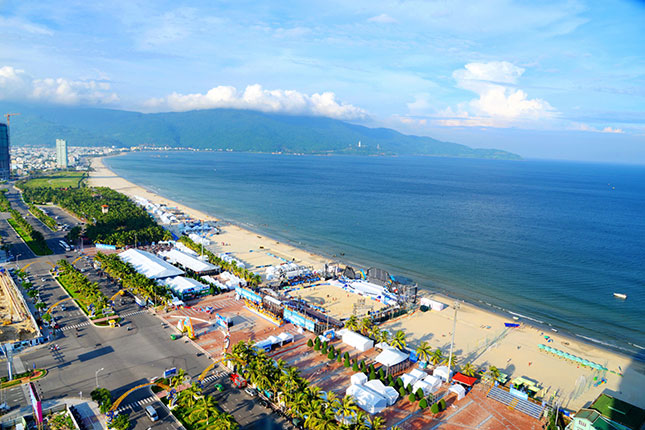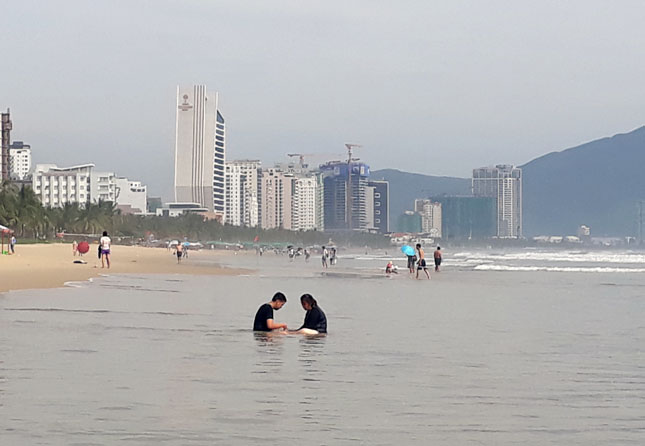Promoting urban space expansion
The Da Nang authorities have asked the Prime Minister for permission to adjust its master urban plan towards 2030, with a vision to 2050, which was initially approved on 4 December 2013.
 |
| A view of a local burgeoning coastal area (Photo: Nguyen Xuan Tu) |
By 2030, with a vision towards 2050, Da Nang will become a hub of tourism, high-quality services and hi-tech in Viet Nam, and it will play an important role in implementing the country’s future urban development strategies.
Many local urban development experts underlined the importance of making amendments to the city’s master urban plan, with a focus on promoting urban space expansion and integrated urban development.
Architect Le Tu Gia Thanh, the Head of the Da Nang Urban Planning Institute, highlighted the significance of conducting research activities into the marine economic growth of the Da Nang Bay and nearby areas.
Mr Thanh also pointed out to the fact that, in the current context of the rapid growth of the tourism sector, the operation of many types of accommodation establishments, especially condotels, has yet to meet the city’s urban development requirements.
This seasoned expert also underscored a must for the city authorities to develop more effective strategies for the Son Tra Peninsula with the aim of promoting its development and ensuring biodiversity conservation there.
New ideas should be promoted to deploy landscape improvements along both banks of the city’s Han River in order to develop them as new attractions in the future.
An emphasis should be placed on ensuring a harmonious combination between modern architectural innovations and the preservation of the natural values of the river.
It is clear to see that the western part of Hoa Vang District boasts the great potential for the development of tourism and hi-tech agricultural production; therefore, it is necessary to establish satellite urban areas and functional sub-zones.
With regard to the development of local industrial parks (IPs), heed should be paid to creating a close link connecting the major transport system with seaports.
In an attempt to tackle traffic congestion in the city centre as a result of the growing volume of private vehicles, it is a good idea to fully tap the potential of underground space, and efficiently use public transport services, airways and waterways.
Furthermore, according to many experts, amendments to the city’s 2030 - 2050 socio-economic master plan should be made on the basis of 2 major pillars: urban space planning, and the development of smart-integrated urban area model.
In particular, focus should be on developing incentive strategies for promoting expansion into the sea to develop new urban land whilst ensuring the sustainable development of the natural environment through establishing more seaport urban areas and marine economic zones in the northern part of the city in the future years.
 |
| Many experts proposed the establishment of sea-encroaching urban areas in sustainable manner |
It should also be taken into account that either the relocation of the Da Nang International Airport after 2050, or the adjustments to the development of an airport system in Central Viet Nam.
Last, but not least, importance should be attached to developing the models of a ‘green urban space’ and a ‘compact city’, and efficiently exploit underground space to accelerate the urban 3-dimensional space development.
The ‘compact city’ or ‘city of short distances’ is an urban planning and design concept, which promotes relatively high residential density with mixed land uses. It is based on an efficient public transport system, and has an urban layout which – according to its advocates – encourages walking and cycling, low energy consumption and reduced pollution.